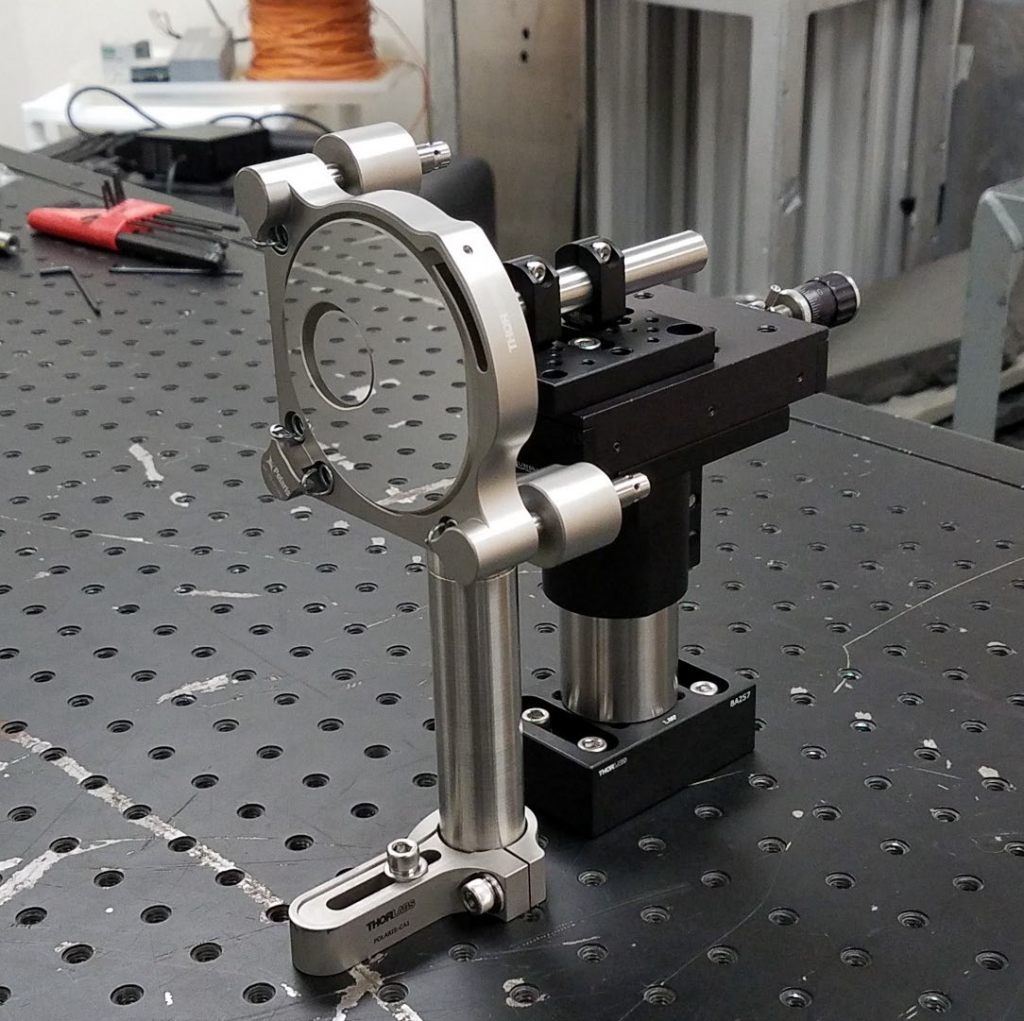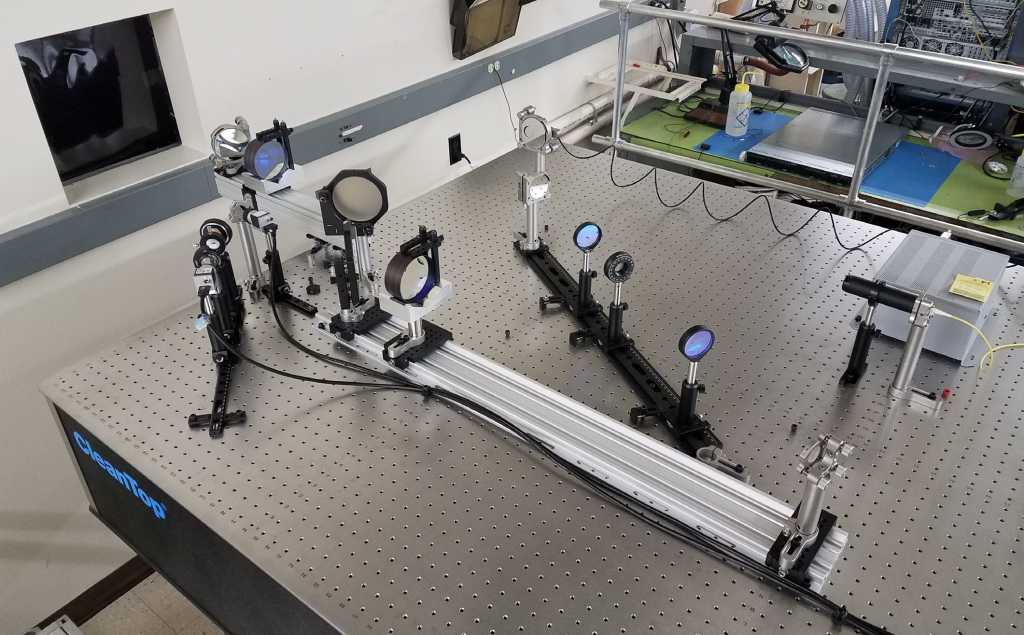For about a year, Laird, Alex H., and I have been putting together the protoype-High Contrast Adaptive Optics Testbed (P-HCAT). P-HCAT sent half of the simulated GMT pupil to the “Holey Mirror” which, as the name suggests, is a mirror with a hole in it.

The holey mirror is able to simulate a piston differential with a piezo-controlled mirror sticking through the hole. This light was sent into MagAO-X and the PyWFS was used to sense piston. The next phase of the project was adding post-doc Sebastiaan Haffert’s Holographic Dispersed Fringe Sensor into MagAO-X. This 1″ optic is able to interfere each segment of the GMT pupil with another then disperse them so we can back out the piston differentials. We got some very interesting results we plan on sharing in some upcoming papers!

The next step is to convert P-HCAT into simply HCAT. This new and improved version will have a concept known as the “parallel DM.” This involves sending the entire GMT pupil onto a reflective 6-sided pyramid, a hexpyramid, which will send the light to 6 separate deformable mirrors. The central segment will pass through a hole in the center of the pyramid.
Manufacturing a hexpyramid with a central hole is no small feat. We are super excited to finally have our hexpyramid in the lab and ready to play with. This week we put it in front of an interferometer to check surface quality. To mount an optic this complex you need to be creative to say the least. See our makeshift mount below. We are happy to note the pyramid is very photogenic – it doesn’t have a bad side!

Piston Control is a fantastic mode of risk reduction for the Giant Magellan Telescope and we are so happy we get to be a part of this effort!
